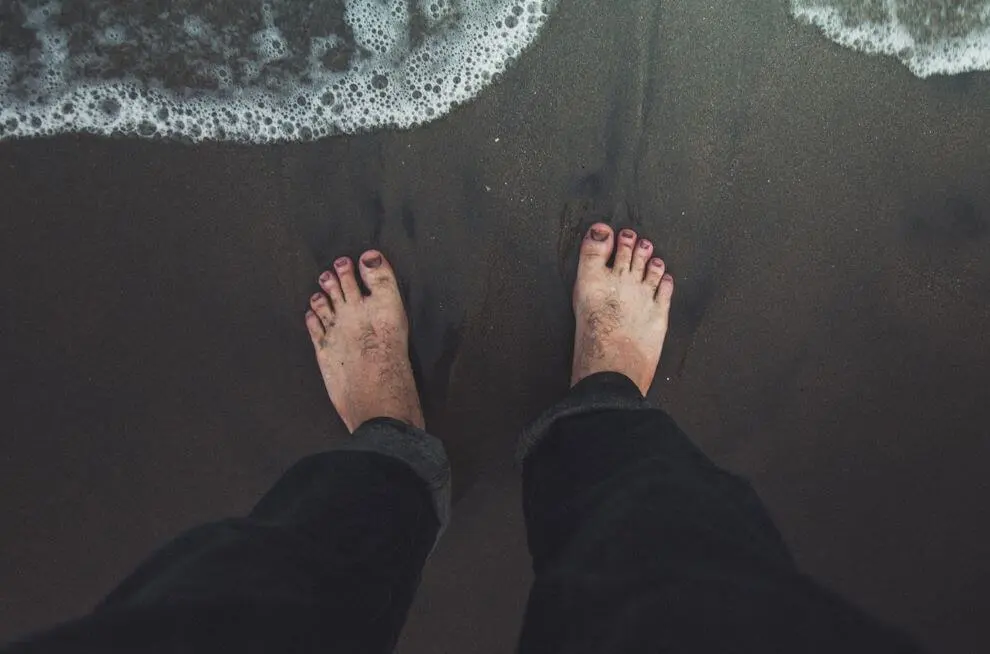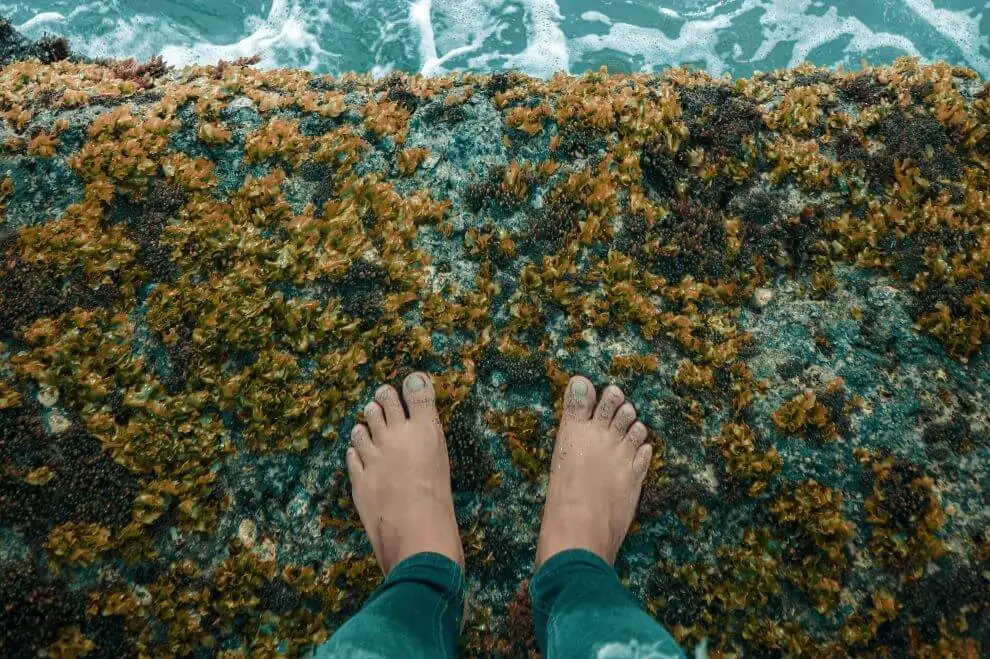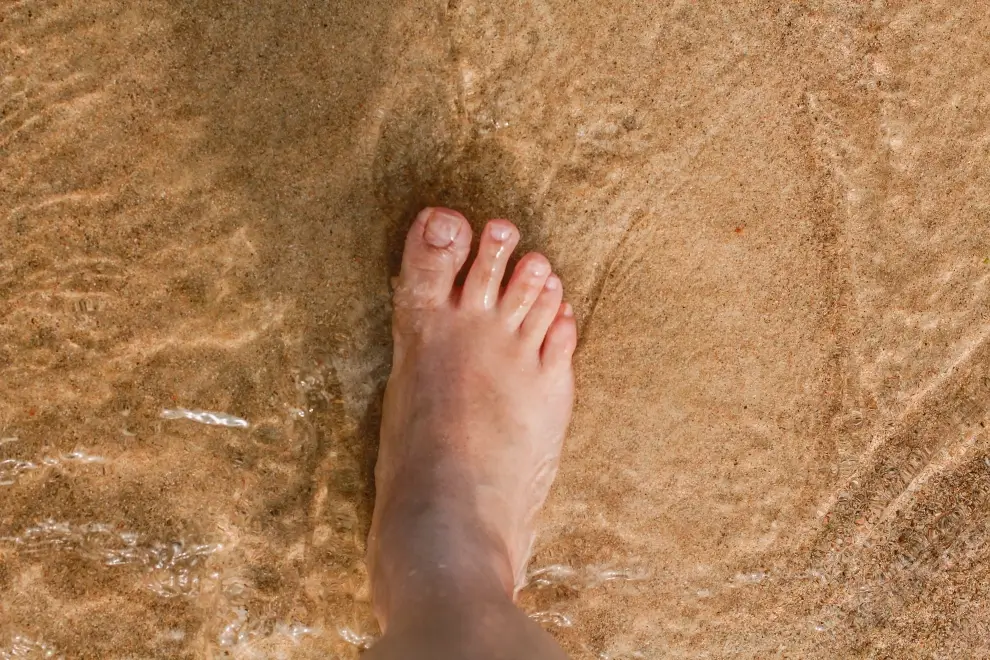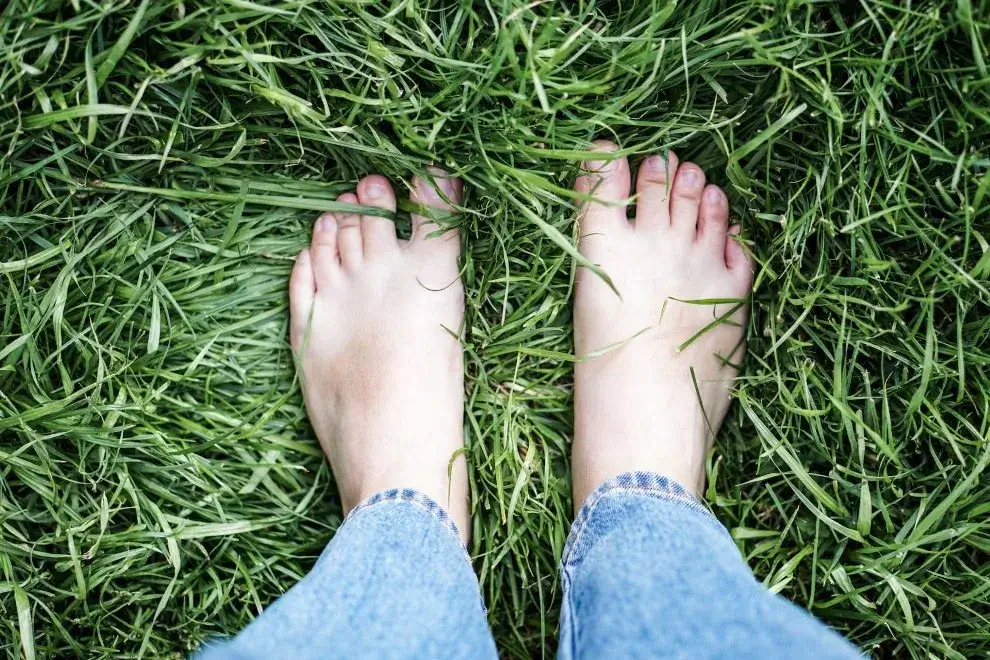Introduction
When you go on a hike, your feet carry the pressure of your entire body and all the equipment you carry. This extra weight can cause your feet to swell, which can be very uncomfortable and make it challenging to continue hiking. I had terrible experiences with this term. I’ll share this experience with you in this blog post. Take breaks often to give your feet a chance to rest.
Swelling is especially common in hot weather, so take extra care of your feet if you’re hiking in the summer. If your feet swell, try to prop them up higher than your heart to reduce the swelling. So keep reading to know details about – How much do feet swell when hiking? And What to do?
My experience with Swelling Feet while Hiking
I was out hiking and came across a beautiful waterfall. I decided to take a break and sit on the edge of the falls to enjoy the view. Unfortunately, as soon as I sat down, I noticed my feet were starting to swell. This wasn’t too unusual for me, as I often get swollen feet when I’m active, but it was concerning, given how close to the falls I was sitting!

I tried standing up and moving around, but the swelling only worsened. So finally, I had to concede that I needed to go back down the trail and find help. It was slow going with my swollen feet, but eventually, I made it back to my car. After a quick call for help, I was on my way to the hospital.
Thankfully, it wasn’t anything serious, and after a few hours of rest, my feet were back to normal. But that experience definitely taught me to be more mindful of where I sit when enjoying nature!
What causes feet to swell when hiking?
Your feet are carrying the weight of your entire body. This extra weight can cause your feet to swell, which can be very uncomfortable and make it challenging to continue hiking. How much do feet swell when hiking? On average, feet can swell up to 20% more than their standard size when hiking. Many reasons cause this swelling. Here are some of those explained below.
Peripheral Edema
Peripheral edema is a condition that occurs when fluids and salts build up in the feet and ankles. There are many factors that can cause this, including excessive sitting or standing, poor circulation, and dehydration. One of the most commonly occurring causes of peripheral edema is physical exertion, such as while hiking.
During intense exercise like hiking, your body loses fluid through sweating, which often gets re-absorbed by your lower extremities. The resulting swelling of your feet and ankles puts pressure on veins that pump blood back toward the heart, which can impede circulation and result in edema.
Tight Gears
Some tight gears can be the reason for swell while hiking. Includes tight pants, boots/shoes, leggings, and undergarments. These tight gears restrict the blood flow and air circulation in these areas. Conversely, loose-fitting gears allow blood and air circulation, which reduces swelling.
Hyponatremia
Hyponatremia is a symptom that occurs when the levels of sodium in your blood are too low. While hiking, one of the leading causes of this condition is excessive sweating and fluid loss. When this happens, the feet, ankles, and other areas become swollen due to an imbalance between fluids and electrolytes.
Since sodium is an essential part of maintaining fluid balance in the body, a lack of it can lead to swelling and other problems during your hike. Other possible causes of hyponatremia on the trail include dehydration and drinking too much water without replenishing electrolytes.
Stress-Induced Swelling
Stress-induced swelling is a common problem among hikers and backcountry adventurers. This condition often occurs when feet and ankles become excessively swollen after strenuous hiking hours, resulting in several uncomfortable and potentially dangerous symptoms.
While the exact cause of stress-induced swelling is not fully understood, some researchers believe that it may be affected by a combination of reasons, including overexertion, low levels of electrolytes, and reduced blood flow to the feet due to an increase in body temperature.
Excess Weight
Excess weight can cause swelling while hiking due to several different reasons. For one, carrying extra weight puts extra pressure on the feet and ankles, especially when hiking uphill or over uneven terrain. This pressure can cause fluid buildup in these areas, resulting in swelling and discomfort.
In addition, excess weight can also lead to muscle strain and fatigue, leaving your feet more prone to injury as you hike. Finally, carrying too much weight while hiking can negatively impact your posture, reducing blood flow to the feet and further increasing swelling during your hike.

How to prevent feet from swelling when hiking?
Swelling is a problem that can happen to any hiker. However, there are many steps to prevent welling while hiking. Some of those are explained below one by one…
Get rid of extra weight
One of the main causes of swelling in the feet and ankles is carrying too much weight. Therefore, it would be best if you carried a maximum of 30% of your total body weight: less extra weight – minimum pressure on your ankles and feet.
Snug Fit Gear
Those gear (pants, boots/shoes, leggings) that you were to hiking should be snug-fitting. Also, use compression socks; Compression socks are proven to prevent swelling in the feet.
Take off your Shoes
Whenever you take a break while hiking, try to take off your shoes or boots, naked your feet. This gives your feet fresh air to breathe and also allows circulation after they come out of those tight shoes.
Stretch your Toes
It is essential to take good care of your feet and ankles. Stretching your toes regularly can help to prevent swelling and discomfort, keeping you energized and focused on the trail. To stretch your toes, simply sit down with your feet flat on the ground, letting your knees bend naturally as needed. You can also try rotating each toe individually in slow, gentle circles; this will help to increase circulation and improve flexibility in the feet and ankles.
Use Trekking Poles
Using trekking poles can be a great way to prevent swelling in the feet and ankles. These poles help to distribute weight more evenly throughout the body, reducing pressure on vulnerable spots such as these. They also engage and strengthen key muscles, which can help further to reduce swelling and fatigue on the feet and ankles. With the added support of trekking poles, hikers are able to cover greater distances with less effort, enabling them to enjoy their time in nature without worrying about sustaining any injuries.
The effects of swollen feet while hiking
The effects of swollen feet while hiking can sometimes be frustrating and even painful. Whether you’ve been out on the trails for a few hours or an entire day, feet that have become engorged or bigger than usual can make it difficult to hike quickly and efficiently. This is because swelling in the feet can cause ankles to become stiff, which can make it harder to move around with each step.
Additionally, feet that swell up tend to feel much heavier and more cumbersome than usual, making it more challenging to keep going over rough terrain. While some mild swelling may be expected after a long hike, more severe cases of feet persistently swollen may indicate conditions like plantar fasciitis or edema.

What to do if your feet swell while hiking?
Suppose your feet swell while hiking, don’t panic! You can do a few steps to help make the swelling more comfortable:
- Try taking a break to rest your feet. You can also try gently massaging your feet to help relieve some of the swellings.
- If your shoes are feeling tight, try loosening them or removing them altogether.
- Keep yourself hydrated by drinking plenty of water.
Can swollen feet lead to other health problems?
Many people experience feet swelling from time to time, especially after long periods of standing or hiking. While it may seem like a minor issue at first, swollen feet can actually be an indicator of several underlying health problems. For example, chronically swollen feet may be a symptom of high blood pressure or kidney disease.
Additionally, legs that have a tendency to swell up after exertion could be suffering from cardiovascular issues such as varicose veins or chronic venous insufficiency. And finally, feet swelling can also indicate that there may be some blockage in the lymphatic system, which can further lead to severe infections if left untreated.
Overall, whether caused by exercise or other factors, feet swelling should not be ignored, and consulting a doctor is recommended in order to prevent any further health complications.
When do feet return to normal after hiking?
After hiking, your feet are likely to get very tired and sore. As a result, your feet and ankles may begin to swell, and it can take some time for them to return to normal. Research suggests that the average person’s feet will start to swell after about an hour of hiking, with swelling usually reaching its peak after several hours.

In most cases, feet will fully return to normal within 24-48 hours of returning from your hike. It is possible to achieve this through a combination of rest and elevation, along with the regular use of compression wraps or bandages around the ankles. Over time, with proper care and attention, your feet will become stronger and better able to withstand the demands of hiking and other high-impact activities.
Tips for keeping your feet healthy while hiking
When you’re hiking, taking care of your feet is essential. Here are some tips for keeping them healthy:
- Wear comfortable shoes that will accommodate the swelling.
- Take breaks often to give your feet a chance to rest.
- Whenever you take a rest, take off your boots and socks.
- Icing any areas that seem exceptionally swollen
- Drink plenty of water to stay hydrated.
- Avoid hiking in hot weather, which can cause your feet to swell more.
- Stretch your feet and calf muscles regularly.
Conclusion
Don’t worry about Feet swelling. Nowadays, everything is risky, and everywhere is a risk of getting anything unwanted. But we have to enjoy ourselves. So keep doing what you want. I hope you got your idea about – how much do feet swell when hiking. If I need to include anything in this article, comment below to remind me. Have you ever experienced swollen feet while hiking? Comment below and let us know what worked for you!


